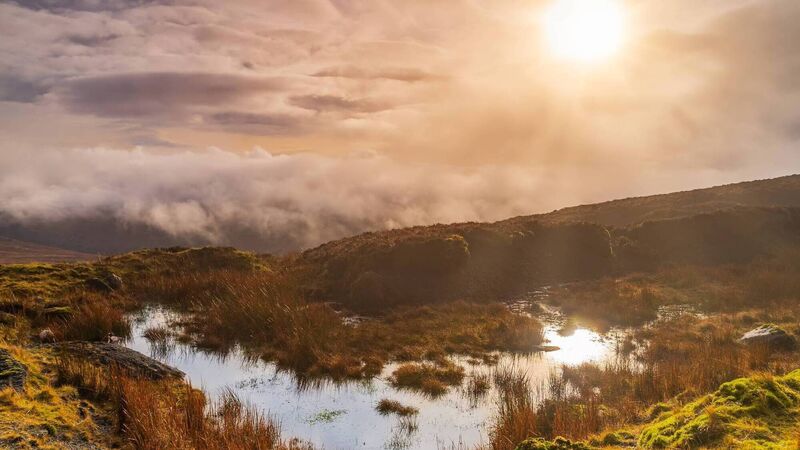Help at hand for repairing damage to Ireland’s blanket bogs

Covering more than seven and a half thousand hectares of Ireland’s uplands, blanket bogs are vital habitats for many rare and threatened species, from insect-eating carnivorous plants to increasingly threatened birdlife.
Over the holidays, like many, I’ve been out hiking in the uplands. Following winding paths up wet peaty mountainsides, enjoying the fresh air and the challenge of the ascent. The uplands are where many of us are drawn to roam, where visible human structures are few and far between and expansive views give our senses some relief from the bustle and clutter of modern life. Many popular routes are now well equipped with raised wooden walkways that mitigate the impact of too many pairs of feet trampling across the heather-clad peat that blankets these mountainsides.
In winter, such sweeping slopes are a tapestry of spongey bog mosses, brittle heathers, and the golden browns of purple moor grass waving in the wind. Distant hills and intervening lowlands fade to the blue of the faraway as we pause to take in the views. Overhead, occasional merlin, peregrine falcon, hen harrier, or even a golden eagle can sometimes be seen soaring on updrafts. In spring, now not so far away, ground nesting birds that have adapted to breed among the low growing vegetation will attempt to raise a brood — curlew, lapwing and golden plover among them.








